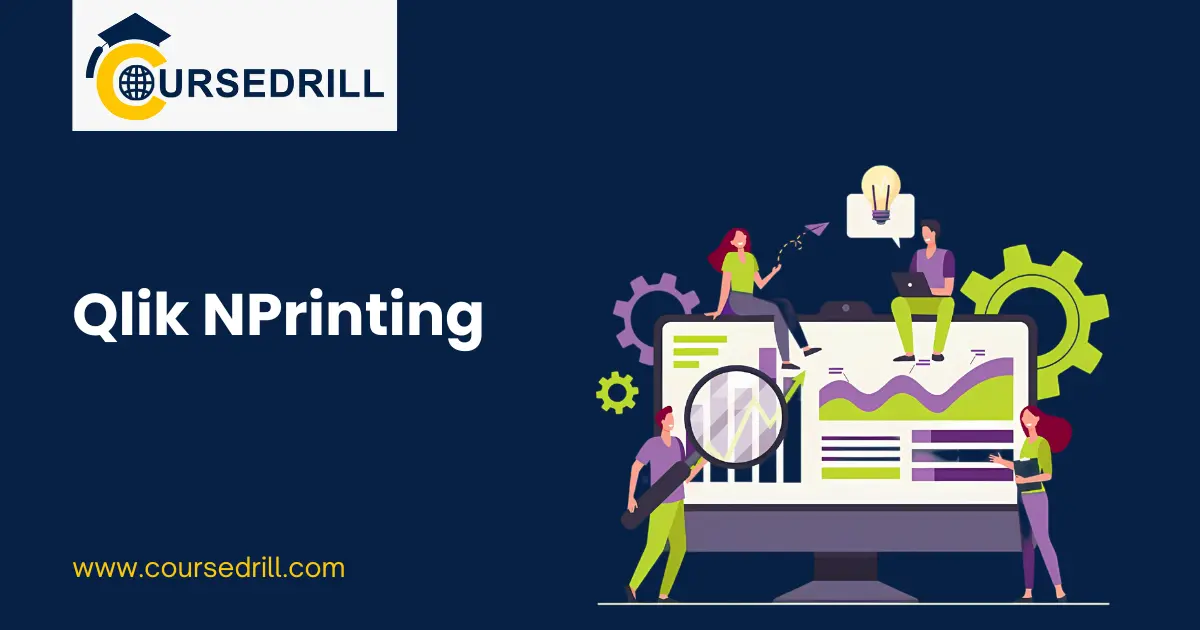- Posted on
- admin
- No Comments
Mastering Qlik NPrinting: The Ultimate Guide to Reporting Excellence
Introduction to Qlik NPrinting
Qlik NPrinting is a powerful reporting and distribution solution designed to generate, schedule, and share data-rich reports using QlikView and Qlik Sense data models. As organizations increasingly rely on data to drive decisions, Qlik NPrinting bridges the gap between data insights and communication by turning dashboards into customizable, distributable documents.
Key Features of Qlik NPrinting
Seamless Report Automation
Automate the entire reporting process from generation to distribution, saving time and reducing manual errors.
Multi-Format Report Generation
Create reports in PDF, Excel, Word, PowerPoint, and HTML formats, allowing flexible consumption across teams.
Advanced Scheduling & Delivery Options
Schedule report delivery based on time or event triggers, and send them via email, web portals (NewsStand), or direct downloads.
Role-Based Access and Security
Control access to reports and data with granular role-based permissions and section access integration.
How Qlik NPrinting Works
Qlik NPrinting connects directly to QlikView and Qlik Sense to retrieve data, generate reports using pre-designed templates, and distribute them through various channels. Its three core components include:
Qlik NPrinting Server: Manages report generation and distribution.
Qlik NPrinting Designer: A Windows-based tool to create report templates.
Web Console (NewsStand): For managing users, tasks, and accessing reports.
Installing and Setting Up Qlik NPrinting
System Requirements
Before installation, ensure the system meets hardware and software prerequisites including supported OS, RAM, CPU, and Qlik product versions.
Step-by-Step Installation Guide
Install Qlik NPrinting Server.
Install Qlik NPrinting Engine.
Install Qlik NPrinting Designer on a compatible machine.
Configure SSL and repository settings.
Post-Installation Configuration
Configure user roles.
Establish QlikView/Qlik Sense connections.
Set up NewsStand and security certificates.
Qlik NPrinting Designer
Qlik NPrinting Designer is a Windows-based application that allows users to create, edit, and preview report templates using familiar Office tools.
Creating Templates Using Office Tools
Design templates in Word, Excel, or PowerPoint by dragging and dropping Qlik objects or fields into the document.
Best Practices for Template Design
Use consistent formatting and styles.
Leverage placeholders and dynamic filters.
Keep layout clean and simple for better readability.
Connecting Qlik NPrinting with QlikView
Creating and Managing QlikView Connections
Connect to QlikView documents using local or server paths and ensure the QlikView service account has the right permissions.
Data Accessibility and Security Considerations
Implement Section Access to control data visibility per user within the reports.
Connecting Qlik NPrinting with Qlik Sense
Authentication and Connection Types
Use certificates or JWT for secure connections. Ensure virtual proxies are configured correctly.
Importing Qlik Sense Apps and Sheets
Easily browse and select Qlik Sense apps and objects to embed in reports through the Qlik NPrinting interface.
Report Types in Qlik NPrinting
PixelPerfect Reports
Ideal for detailed, print-ready reports with precise layout control.
Excel Reports
Great for data-heavy analysis, financial modeling, and tabular data representation.
Word and PowerPoint Reports
Useful for business narratives, executive summaries, and presentations.
HTML Reports
Best for embedding in web environments or sending as interactive reports.
Report Creation Process
Creating Reports from Scratch
Choose the report type, select the data source, and design the layout using Qlik NPrinting Designer.
Applying Filters and Conditions
Add filters globally, by report, or per user to ensure tailored data delivery.
Using Variables and Expressions in Reports
Incorporate dynamic elements like date, region, or KPIs using Qlik variables and expressions.
Report Scheduling and Distribution
Creating Schedules
Define recurrence patterns like daily, weekly, or event-based triggers.
Emailing Reports to Users or Groups
Send reports directly to emails as attachments or inline previews.
Using NewsStand for Report Access
A web-based portal where users can access their published reports on demand.
Managing Users and Roles
Creating Users and User Roles
Add users manually or through LDAP integration. Define roles like Admin, Developer, or Viewer.
Assigning Permissions
Set granular access to reports, folders, and features based on roles.
LDAP and External Authentication
Integrate with enterprise directories for centralized user management.
Data Security and Governance
Section Access Integration
Sync with Qlik’s section access to filter data dynamically per user.
Data Reduction Techniques
Apply filters and user attributes to limit data exposure based on context.
Ensuring Report Confidentiality
Encrypt reports, secure email delivery, and use audit logs to track access.
Qlik NPrinting Web Console
Navigating the Interface
Intuitive layout for managing tasks, reports, users, and schedules.
Project Management Features
Clone projects, export/import tasks, and manage large report ecosystems.
Audit Logs and Monitoring
Track system activity, user interactions, and report delivery status.
Advanced Features and Use Cases
On-Demand Reporting
Allow users to generate reports on request directly from Qlik dashboards.
Embedded Reporting for External Users
Share static insights with partners or clients via embedded reports.
Multi-Language Support
Create reports in different languages using dynamic translation fields.
Troubleshooting and Debugging
Common Errors and How to Fix Them
From connection issues to template rendering failures, learn common solutions.
Log Files and Diagnostics
Access detailed logs to troubleshoot issues in NPrinting components.
Support and Community Resources
Leverage Qlik support portal, forums, and community knowledge base.
Performance Optimization Tips
Improving Report Rendering Speed
Use optimized templates, limit large visuals, and reduce data volume.
Server Load Management
Schedule heavy tasks during off-peak hours, and scale engines for load balancing.
Efficient Template Design
Reuse components, avoid nested tables, and keep template logic simple.
Comparing Qlik NPrinting with Other BI Reporting Tools
Power BI Paginated Reports
Highlight the pros and cons of both platforms.
Tableau Reporting Extensions
Discuss extensibility and user interface differences.
Crystal Reports
Compare legacy vs modern approaches in reporting.
Real-World Applications of Qlik NPrinting
Financial Reporting
Automated P&L statements, balance sheets, and audits.
Sales and Marketing Dashboards
Distribute sales KPIs, lead conversions, and campaign analytics.
Operations and Supply Chain Insights
Share operational efficiency metrics and logistics data across teams.
Latest Updates and Roadmap
Recent Enhancements
List recent features like improved HTML reporting and SSO.
Future Features (as per Qlik’s roadmap)
Discuss upcoming capabilities such as AI-powered summaries and cloud integration.
Best Practices for Success
Design Consistency and Branding
Ensure all reports reflect organizational branding and formatting standards.
Regular Maintenance and Audits
Keep reports updated and validate them periodically.
Documentation and Version Control
Track report versions, changes, and maintain developer notes.
Conclusion
Qlik NPrinting transforms how organizations share insights by offering powerful, automated, and customizable reporting solutions. Mastering it unlocks tremendous value for BI teams looking to drive action through data.
FAQs
Is Qlik NPrinting included with Qlik Sense or sold separately?
A: It is sold separately as an add-on product.
Q2: Can I use Qlik NPrinting to export interactive dashboards?
A: No, NPrinting exports static reports, not interactive dashboards.
Q3: What are the licensing options for Qlik NPrinting?
A: Licensing is based on server and user-based models.
Q4: How secure is data handled by Qlik NPrinting?
A: It supports encryption, section access, and audit logging for robust security.
Q5: Is there a free trial available for Qlik NPrinting?
A: Qlik may offer trials upon request through their sales team.
Q6: Can I customize the email templates used in report delivery?
A: Yes, you can design custom HTML email templates for personalized delivery.
Q7: What are the limitations of Qlik NPrinting in a multi-node environment?
A: It requires careful engine load balancing and has strict deployment prerequisites.
Q8: How do I automate report generation for different time zones?
A: Use user-specific time zone settings and scheduling rules.
Popular Courses



